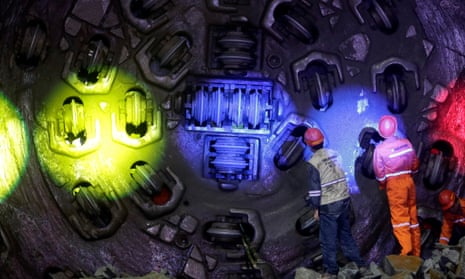Renewables are finally becoming a globally significant source of power, according to a United Nations Environment Programme report released in March by Frankfurt School UNEP Centre and Bloomberg New Energy Finance.
Driven by rapid expansion in developing countries, new installations of carbon-free renewable power plants in 2014 surpassed 100,000 megawatts of capacity for the first time, according to the Global Trends in Renewable Energy Investment report. It appears that renewable energy is now entering the market at a scale that is relevant in energy industry terms – and at a price that is competitive with fossil fuels.
The numbers are compelling. Renewables such as wind, solar and biomass generated an estimated 9.1% of the world’s electricity in 2014, up from 8.5% in 2013, according to the report. These sources made up the majority of new power capacity in Europe, and also brought electricity to new markets.
They also caught the eyes of investors: in 2014, energy investment in rose 17% over the previous year, surging to $270bn, according to the report.
Conventional wisdom meets unconventional growth
Some experts still predict that fossil fuels will supply the majority of our energy for decades to come, but the evidence strongly points in another direction. As the Global Trends report points out, the clean energy investment that funded almost half of all new power plants in 2014 came at what would, seemingly, be a very bad time for renewables. While oil prices were rapidly falling and China’s coal consumption was decreasing, both commodities were, if anything, more economically viable.
But at the same time, renewables appear to be increasing rather than decreasing in competitiveness. For example, a large-scale solar plant in Dubai has recently bid to provide electricity at less than $0.06 per kilowatt-hour. To put this in context, this is less than what the vast majority of consumers around the world pay to keep the lights on. It’s a third of the cost of electricity in Africa. Grid parity for solar is already available in many countries; in others, it’s just around the corner.
In developing countries, where renewables are best positioned to address the chronic lack of energy access, clean energy investment rose 36% to $131bn. It’s well on track to surpass investment in developed countries, which amounted to $139bn last year.
When it came to investment, China led with $83bn in clean energy funding, but many other countries followed closely behind. Some of the most promising states – like Brazil, India and South Africa – are expected to lead the way. Others, like Kenya, which boasts one of the largest solar rooftop system on the continent and shortly the largest wind farm, are more of a surprise.
It’s hard to overstate how vast and impressive this change is. In the first years of this century, it was simply unthinkable that, between 2004 and 2011, 70% of new power capacity added in Europe would come from renewable energy sources. For that matter, the 100,000 megawatts of renewable capacity that were added around the globe in 2014 are equivalent to the total installed nuclear power capacity in the US.
To some extent, comparing the capacity of US nuclear installations to that of renewable installations across the world is comparing apples and oranges. While the capacities are comparable, the actual energy generation likely isn’t. That said, it’s clear that the world is finally producing renewable energy at an industrial scale.
Bloomberg’s New Energy Finance 2030 Market Outlook reflects this: it forecasts that the capacity of new renewable installations, including large scale hydro, could outpace that of new fossil fuel power plants by threefold over the next 15 years.
A change in perspective
The interest in clean energy has spread to every corner of the globe, undermining the long-held assumption that a strong economic future is reliant on fossil fuels, particularly in the developing world. The technology evolution that dropped the cost of solar modules by around 75% between 2009 and 2014 is now being followed by political and financial initiatives that are further driving down costs.
South Africa, Brazil, China and India have developed new policy approaches for auctioning off power concessions. Today, those mechanisms are spreading to Europe. Meanwhile, America’s big banks are bundling thousands of rooftop solar systems into Wall Street-friendly investment opportunities. On the other end of the economic spectrum, crowdsourcing and community financing is also taking hold and driving growth at the grassroots level.
One of the next big steps for government will be removing or redirecting state support for mature and profitable fossil fuels. According to the IEA, fossil fuel subsidies totaled an estimated $550bn in 2013, more than four times those for renewable energy.
If we redirect most of the estimated $36tn that will be invested in energy infrastructure over the coming two decades into clean energy, the transition to a green economy could be realized far more quickly than most imagine today.
Beyond all the numbers, though, there’s also an intangible energy building behind renewables. Simply put, people are inspired by clean energy and realize that it’s an idea whose time has come.
Right now, for example, two pilots are attempting to circumnavigate the Earth in an airplane powered only by the sun. Tackling a feat that not long ago would’ve been considered impossible, they have combined the best solar technology with the most efficient motors and materials to take their plane, the Solar Impulse, on an epic, clean energy voyage.
The clean energy future isn’t just possible and desirable – it’s essential. On a vital, basic level, our decisions and actions will determine whether the Anthropocene will be an age in which human ingenuity and responsibility will allow 10 billion people to have access to modern forms of energy without compromising the vital life support systems of our planet.
